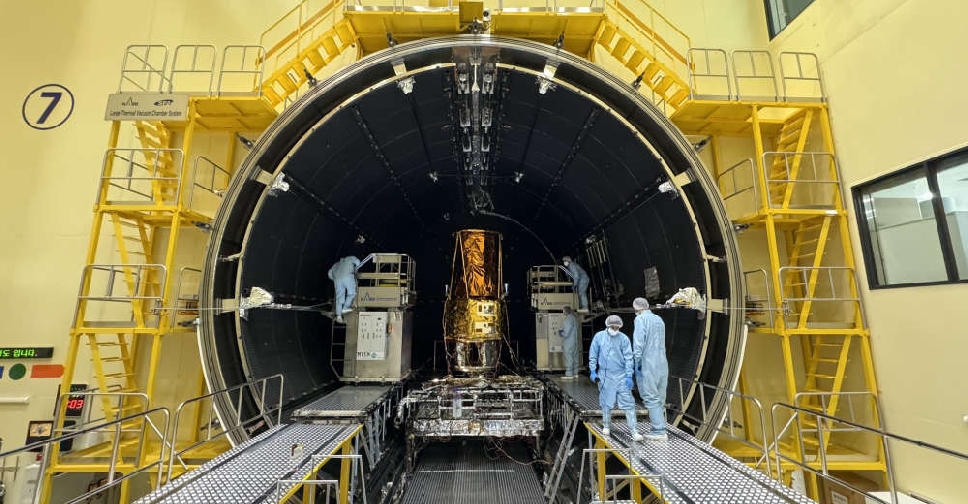
The Mohammed bin Rashid Space Center (MBRSC) has started environmental testing on the MBZ-SAT satellite, after transporting it to the testing facilities of the Korea Aerospace Research Institute (KARI).
The tests, which will last approximately two months, aim to ensure that the satellite can withstand the challenges of launch and operation in space.
A team of 36 MBRSC engineers is currently in South Korea to oversee preparations.
MBZ-SAT, fully developed and built by a team of Emirati engineers, is expected to be launched no earlier than October 2024.
After the successful completion of the environmental testing phase, MBZ-SAT will be ready for transport to the United States, where after arrival it will be prepared for the planned launch.
The satellite will be launched on a SpaceX Falcon 9 rocket during the Transporter-12 Rideshare mission.
Highlights of the start of environmental testing on MBZ-SAT, after it was transported to the Korea Aerospace Research Institute (KARI) testing facility. This phase includes thermal vacuum testing (TVAC), vibration, acoustics and mass properties. pic.twitter.com/ajKdEgqSrs
– MBR Space Center (@MBRSpaceCentre) June 13, 2024
Environmental testing phases
The satellite’s environmental testing sequence will begin with thermal vacuum testing (TVAC), during which it will be subjected to simulated space conditions of extreme temperatures and vacuum.
After TVAC, the satellite will undergo vibration testing, which assesses its structural integrity and ability to withstand mechanical stresses encountered during launch and operation.
Subsequently, the satellite will be subjected to acoustic tests, replicating the intense sound pressure levels encountered during launch, to ensure that it can withstand such conditions without damage.
Finally, mass property tests will be performed to accurately measure and characterize the mass distribution of the satellite, thereby facilitating its precise deployment and trajectory calculations in space. This sequential testing approach ensures a thorough assessment of the satellite’s readiness for safe and reliable operation in space.
Most advanced satellite in the region
MBZ-SAT, equipped with one of the most powerful cameras in the region, can capture high-resolution images of areas smaller than one square meter, meeting growing commercial demand for such images and making the UAE a high-tech space technology development center. and innovation.
The MBRSC will provide rapid processing of captured data around the clock, sharing it with users around the world through an advanced system.
This imaging solution can support a wide variety of uses in mapping and analysis, environmental monitoring, navigation, infrastructure management, and disaster relief efforts .

Comments